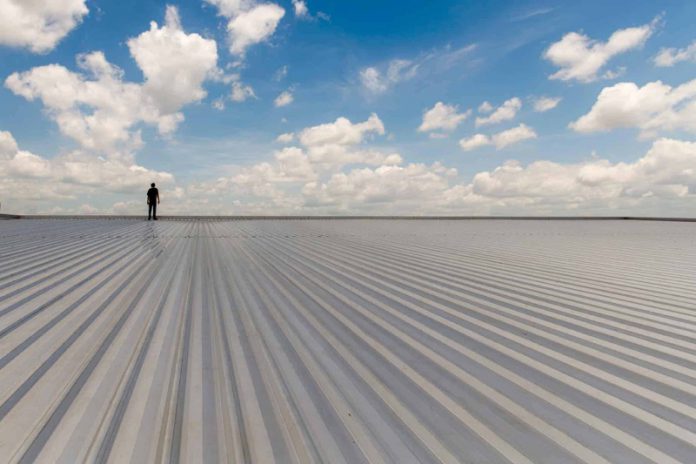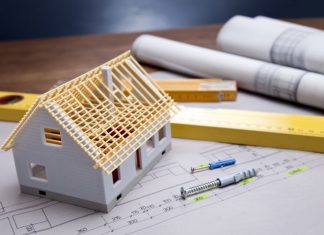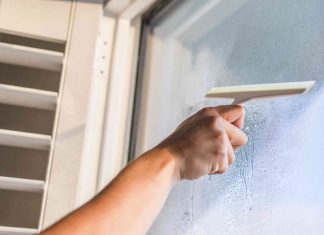Metal roofing is one of the most common types of roofing in the world. It is popular due to its long-lasting effects. Moreover, it is reliable. Therefore, it is important to ensure that the metal roofing is well maintained for durability and regularly inspected to keep your family members safe. However, with time the metal roofing may deteriorate in appearance, compromising their protective features. Therefore, during the routine inspections, the roof inspector should examine the roof and check for any signs of damage. In case there are any damages, then they will recommend roof restoration if needed. For instance, metal roofing is prone to rust; thus, wear and tear is inevitable.
The restoring process requires a qualified roofing expert. You can check out roofing experts on the roofing website to ensure you get someone to do your roof work perfectly. Different signs will prompt your roofing expert to recommend a roofing restoration. Some of the signs may include; moss and fungus development, Metal sheets that have faded or become dull. Also, roof sheets, downpipes, and gutters that have rusted, Screws that are rusted or nails that are loose, metal roof sheets with holes, Roof margins with rotted woodwork. More include; Watermarks on the ceiling or leaks, Metal sheets, and flashings that are loose or damaged. Finally, Thermal control has been compromised. Therefore, these signs, if not taken care of on time, may lead to further damage that may result in re-roofing the whole building.
The procedure of restoring a roof is quite simple. Of course, there are distinctions between the various materials and designs. Nonetheless, there is a basic order to which roof inspectors should complete all roof repair jobs.
The specifics of the type of restoration are highly dependent on the type of roof. For instance, color bond roofs are that they easily get rusty, especially the crews. Therefore repair will include the removal of all those old screws. Also, the zincalume type of roof these are known for their not-so-good loos. Therefore, repainting is necessary. Finally, there are the flat metal roofs; they are also vulnerable to rusting and leaking. Therefore since this type has high water retention, restoration involves extra attention paid to plumbing while reconstructing a flat roof to allow for the smooth redirection of rainfall.
Listed below are some of the stages involved in the restoration process for all types of materials or designs.
1. Roof assessment
This is the processing of accessing the roof to check for any signs of wear on your roof. When inspecting for wear and tear, one can decide to do it on their own or hire a roofing expert. If the self does the inspection, it is necessary to ensure you follow some safety tips. For instance, ensure you are wearing some safety equipment and stepping away from the roof’s vulnerable spots, such as the seams. Therefore, when roof accessing, ensure you check for damage to the structure, rust, corrosion, or leaks. However, the assessment can be done by the hired roofing company. Moreover, they should also create a thorough quote as part of the evaluation, which includes all necessary repairs and related expenses.
2. Preparation of the roof
The region must be meticulously prepped before the roof can be effectively restored. If you reside in Melbourne and your roof is higher than 2 meters, the first stage in roof preparation is to install guard rails, which are needed by law when working on a roof. After that, the whole roof must be scrubbed. While eliminating dirt and debris is important, you’ll also need an immaculately clean surface to apply any coatings afterward. If the roof has been painted before, cleaning also entails removing any flaking paint or sealant. Professional roofing firms do this by using high-pressure cleaning equipment at pressures of up to 3000 psi. Avoid pressure washing the roof yourself, at least not before a roof repair job, because this is considerably higher than the 1000-1500psi of home equipment. Apart from cleaning the roof, applying high pressure to the surface eliminates rust stains, peeling, or flaking old coatings and improves the adherence to the new coat.
3. Restoration of the roof
The restoration method depends on different factors, such as the nature of the damage and the type of roof. Therefore, the restoration process has a few steps these include,
- The first stage entails a thorough inspection of the roof. Ensure the metal sheets are in place. It is necessary to fasten any loose sheets and flashings. Where necessary, rusted nails and screws should be replaced.
- Ensure that all traces of rust are removed. Eliminating any signs of rust or corrosion is one of the most critical jobs in repairing any metal roof. Any residues left on the roofing material will cause oxidation and corrosion in the future. Therefore, rust primers are applied to the clean surface to eliminate rust and keep it at bay. They keep the metal from rusting and increase the roofing membrane’s adherence later on.
- Apply a roofing membrane on the roof. It’s time to finish the restoration job once all sheets and flashing have been fastened. Therefore, all rust has been removed from the roof. To do so, you must first apply a primer to the metal. It would clean up the surface and improve adherence. After that, you’ll need to apply two coatings of the metal roof membrane. The membrane’s specific type is determined by the metal used. Most membranes are also come in a variety of colors to suit your taste
To sum up, it is important to ensure you maintain routine checkups for your roof o check if there are any damages. In case of damages, a regular checkup will provide you repair them on time.














